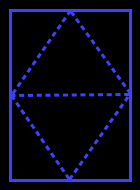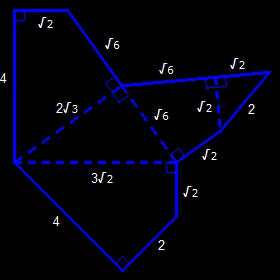A noble polyhedron is one which is isohedral (all faces are identical) and isogonal (all vertices are identical). The dual of a noble polyhedron is also noble.
A disphenoid is an equifacial tetrahedron (four identical faces); the faces of a tetragonal disphenoid are isosceles and arranged in such a way that they create a double wedge (sphenoid comes from the Greek word for wedge).
The faces of this tetragonal disphenoid have side's lengths a√3, a√3 and 2a. Its net can be obtained by simply folding a format A sheet (2a × 2a√2). It fills the space.


